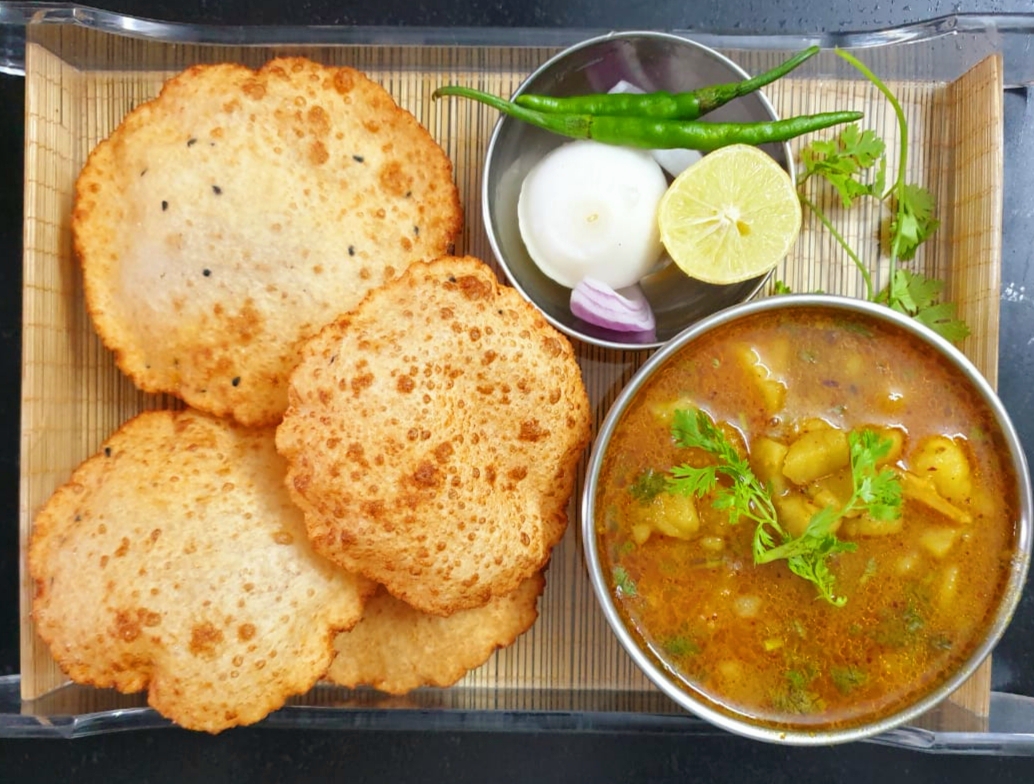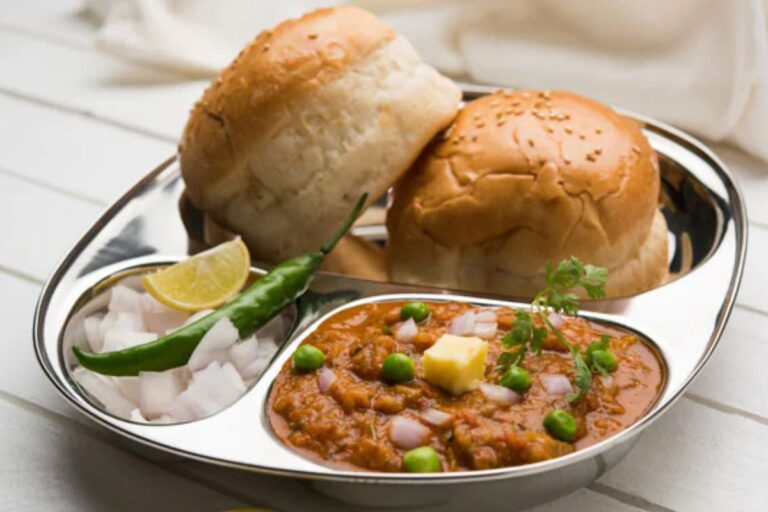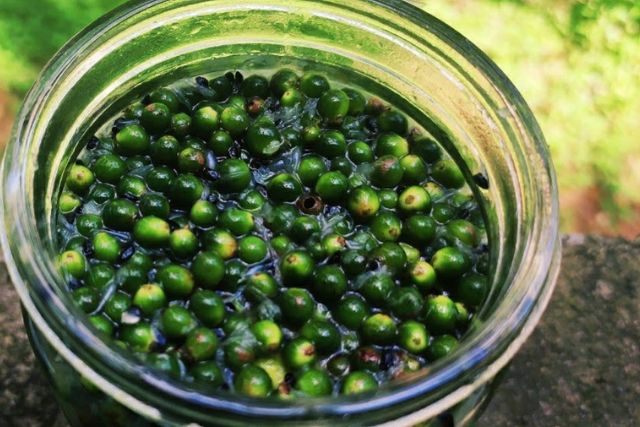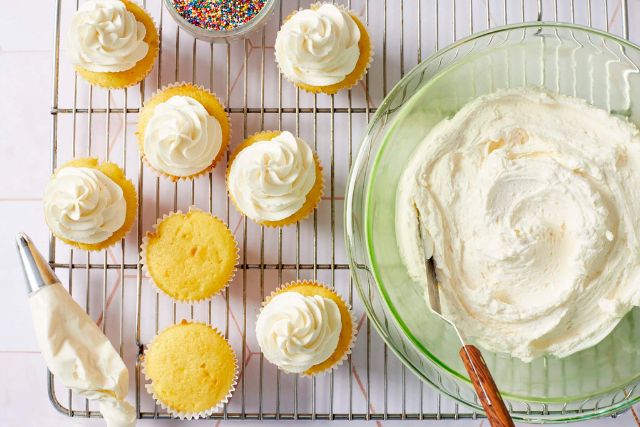Bedmi Puri Recipe : A Flavorful Journey into North Indian Cuisine
North Indian cuisine is renowned for its rich flavors and diverse array of dishes that cater to both vegetarians and non-vegetarians alike. Among these culinary delights, Bedmi Puri stands out as a beloved dish that embodies the essence of traditional home-cooked meals in the region. In this article, we will explore the origins of Bedmi Puri, its ingredients, step-by-step preparation method, variations, and tips to ensure a perfect outcome every time. Whether you’re a seasoned cook or a novice in the kitchen, mastering the art of Bedmi Puri Recipe will undoubtedly add a flavorful twist to your culinary repertoire.
Origins of Bedmi Puri Recipe
Bedmi Puri traces its roots to the vibrant culinary traditions of Uttar Pradesh and Rajasthan, where it is a staple dish enjoyed during festive occasions and everyday meals alike. The word “Bedmi” is derived from “urad dal,” a type of lentil used in the preparation of the dough, giving the puris their distinctive texture and flavor. This dish has been passed down through generations, evolving into various regional interpretations while retaining its core essence of comfort and indulgence.
Ingredients for Bedmi Puri Recipe
To prepare authentic Bedmi Puri Recipe, you will need the following ingredients:
- For the Dough:
- 1 cup whole wheat flour (atta)
- 1/2 cup urad dal (black gram split lentils), soaked for 4-6 hours
- 1-2 green chilies, finely chopped
- 1 teaspoon cumin seeds
- 1/2 teaspoon turmeric powder
- Salt to taste
- Water, as needed for kneading
- For Frying: Oil or ghee (clarified butter)
- For Serving:
- Aloo ki Sabzi (potato curry) or any curry of your choice
- Mango pickle or any pickle of your choice
Step-by-Step Preparation Method or Bedmi Puri Recipe
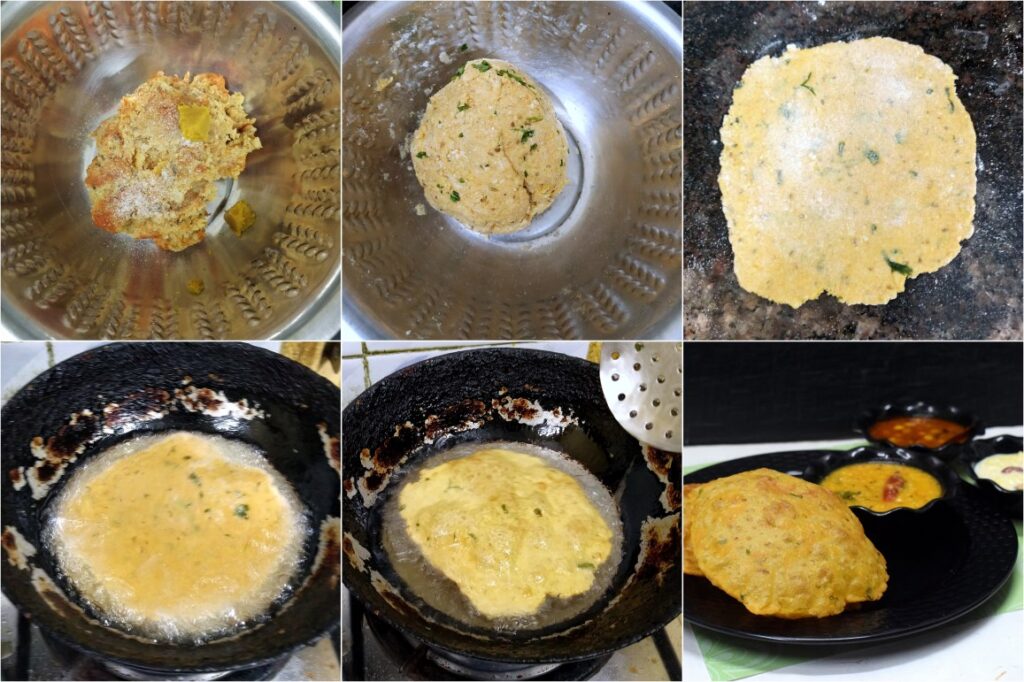
- Preparing the Dough:
- Drain the soaked urad dal and grind it to a coarse paste without adding water.
- In a mixing bowl, combine the whole wheat flour, ground urad dal paste, green chilies, cumin seeds, turmeric powder, and salt.
- Gradually add water and knead into a firm dough. Cover with a damp cloth and let it rest for 20-30 minutes.
- Shaping the Puris:
- Divide the dough into small lemon-sized balls.
- Roll each ball into a smooth ball between your palms.
- Flatten each ball slightly and roll it out into small discs using a rolling pin. The puris should be slightly thicker than regular puris.
- Frying the Puris:
- Heat oil or ghee in a deep frying pan over medium heat.
- Once the oil is hot, gently slide in a rolled-out puri.
- Press lightly with a slotted spoon to help it puff up. Fry until both sides are golden brown and crisp.
- Remove the puri using a slotted spoon and drain excess oil on paper towels.
- Serving Bedmi Puri:
- Serve hot Bedmi Puris with Aloo ki Sabzi or any curry of your choice.
- Accompany with mango pickle or your favorite pickle for added flavor.
Variations of Bedmi Puri
While the traditional Bedmi Puri recipe remains popular, there are several regional variations and adaptations that cater to different tastes and preferences:
- Stuffing Variations: Some recipes incorporate stuffing inside the puris, such as a spiced lentil filling or mashed potatoes mixed with spices.
- Spice Level: Adjust the amount of green chilies or add red chili powder for a spicier version.
- Flour Combination: Experiment with different flour combinations, such as adding a small portion of all-purpose flour or semolina (sooji) for texture variation.
Tips for Perfect Bedmi Puri Recipe
Achieving the perfect Bedmi Puri requires attention to detail and a few handy tips:
- Consistency of Dough: Ensure the dough is kneaded to a firm consistency. Too soft or too hard dough can affect the texture of the puris.
- Oil Temperature: Maintain the oil or ghee at the right temperature. If too hot, the puris will burn; if not hot enough, they will absorb excess oil.
- Puffing Technique: Gently press the puri with a slotted spoon while frying to help it puff up evenly.
- Serve Fresh: Bedmi Puris are best enjoyed fresh and hot, straight from the frying pan to the plate.
Mastering the art of Bedmi Puri Recipe opens up a world of flavors and textures that are sure to delight your taste buds and impress your guests. Whether served as a breakfast dish, during festivals, or as a comforting meal on a lazy afternoon, Bedmi Puri embodies the warmth and richness of North Indian cuisine. With this comprehensive guide, you are now equipped to recreate this iconic dish in your own kitchen, adding a touch of tradition and flavor to your dining experience. Embrace the culinary journey and savor the magic of Bedmi Puri with every bite!
Frequently Asked Questions (FAQs) about Bedmi Puri Recipe
What is Bedmi Puri?
Bedmi Puri is a traditional North Indian dish made from a dough of whole wheat flour (atta) and soaked urad dal (black gram split lentils). It is flavored with spices like cumin seeds, green chilies, and turmeric, then deep-fried until crisp and golden brown. Bedmi Puris are often served with Aloo ki Sabzi (potato curry) and pickles, making them a popular choice for breakfast or festive meals.
How do you make Bedmi Puri dough?
To make Bedmi Puri dough, start by grinding soaked urad dal into a coarse paste. Mix this with whole wheat flour, chopped green chilies, cumin seeds, turmeric powder, and salt. Knead the mixture into a firm dough using water as needed. Let the dough rest for 20-30 minutes before shaping into small balls and rolling out into discs for frying.
Can I use any other dal instead of urad dal for Bedmi Puri?
While urad dal is traditionally used for Bedmi Puri, some recipes may substitute it with other lentils like moong dal (split green gram). However, keep in mind that the texture and flavor may vary slightly from the authentic preparation.
How do you serve Bedmi Puri Recipe?
Bedmi Puris are typically served hot, straight from the frying pan. They are enjoyed with Aloo ki Sabzi (potato curry) or any curry of choice. Additionally, Bedmi Puris pair well with mango pickle or other spicy pickles for added flavor.
Can Bedmi Puri dough be made ahead of time?
Yes, you can prepare Bedmi Puri dough ahead of time. After kneading the dough, cover it with a damp cloth or plastic wrap and refrigerate for up to a day. Before frying, bring the dough to room temperature and knead it briefly to ensure a smooth texture before shaping and frying the puris.
